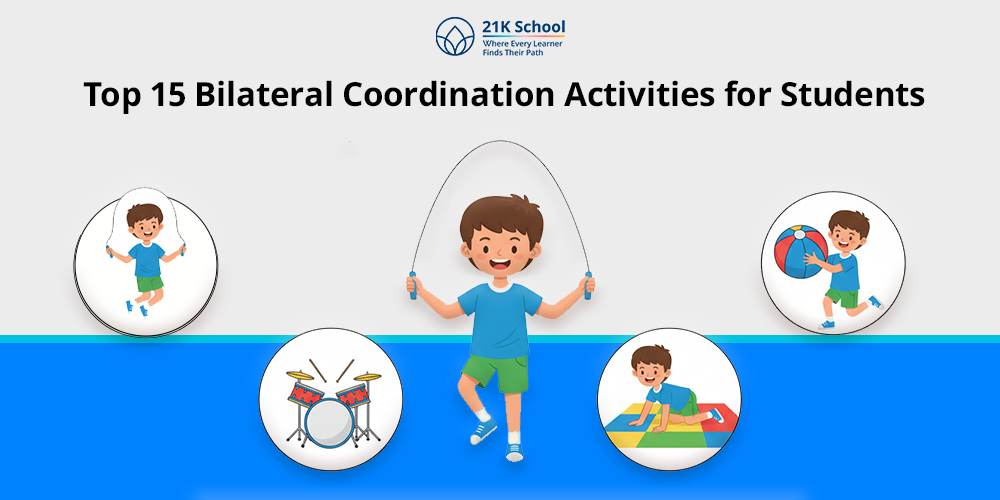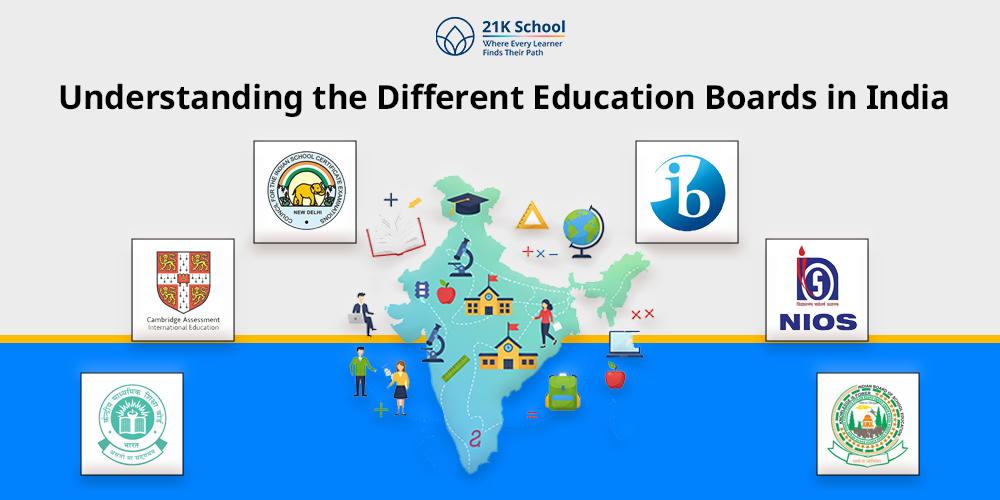
In our daily life activities everyone mostly uses both sides of the body together such as tying shoelaces or hitting a ball with a bat.
The ability to do so is known as “Bilateral Coordination”, a foundational skill that helps in the development of individuals from a young age.
From learning proper posture, body movement to improving balance, bilateral coordination activities are ideal ways for students to gain strength.
Whether you are a parent, teacher or student who wants to implement bilateral coordination activities in daily life then you are at the right place.
Let’s explore some of the popular yet engaging bilateral coordination activities that make a big difference especially in young kids.
Contents
- 1 What are Bilateral Coordination Activities?
- 2 15 Playful Bilateral Coordination Activities for Students
- 2.1 1. Playing Instruments
- 2.2 2. Clapping Game
- 2.3 3. Tying Shoes
- 2.4 4. Jumping Jacks
- 2.5 5. Catching and Throwing Objects
- 2.6 6. Tearing Paper
- 2.7 7. Climbing
- 2.8 8. Threading Beads
- 2.9 9. Lacing Cards
- 2.10 10. Using Scissors
- 2.11 11. Animal Walks
- 2.12 12. Dressing Dolls
- 2.13 13. Drumming
- 2.14 14. Marching
- 2.15 15. Ruler Drawings
- 3 Conclusion
What are Bilateral Coordination Activities?
Bilateral coordination activities means unique and playful activities in which both sides of the body (left and right) are used together for better control and coordination.
These activities improve students’ physical strength and enhance brain abilities, motor control, timing, and balance.
15 Playful Bilateral Coordination Activities for Students
Given detailed information are top 15 playful bilateral coordination activities for kids that can be implemented at home and in school.
1. Playing Instruments
Playing various instruments is one of the ideal activities for kids coordination. It can be played by young children to college adults.
- How it helps: To enhance learners’ symmetrical and reciprocal coordination playing instruments is ideal.
- Activity idea: Individuals can use hand drums or playing instruments. For example, guitar to ensure balance on left and right hands together.
- Bonus tip: Play familiar songs to follow rhythm leads to student engagement .
2. Clapping Game
Clapping is a bilateral coordination activity for young kids. Here, they use both hands together in rhythm for coordination.
- How it helps: To improve timing, rhythm, concentration, and visual coordination clapping is an easy activity.
- Activity idea: Kids can create their own pattern to improve memory power.
- Bonus tip: Clapping Memory Challenge is a popular group activity for children.
3. Tying Shoes
Tying shoes is one of the quick and simple ways to learn bilateral coordination exercises in which both hands move differently but in harmony.
- How it helps: It is an effective asymmetrical coordination activity for fine motor strengthening.
- Activity idea: Practice by daily shoe lace tying.
- Bonus tip: Kids can also use large cardboard to practice before tying on shoes.
4. Jumping Jacks
In bilateral coordination, exercises like jumping jacks kids use both arms and legs simultaneously leading to bone and muscle strengthening of children.
- How it helps: It helps in overall body development and control.
- Activity idea: Kids can also play slow-motion jumping jacks or use music to coordinate.
- Bonus tip: Set a target for example 10 to 15 jumping jacks or challenge friends.
5. Catching and Throwing Objects
Playing object catching and throwing helps in eye-coordination and body movement.
- How it helps: By daily practicing students can improve their balance, and reaction time.
- Activity idea: Choose different ball sizes from big to small for practice.
- Bonus tip: Kids can twist the game and catch only one color ball to improve eye accuracy.
6. Tearing Paper
In this activity kids tear different colors paper to engage in hand coordination and focus on accuracy.
- How it helps: The game requires both hand and mind coordination to create a certain picture through paper tearing activity .
- Activity idea: Give different color and texture papers to kids and let them create their own art.
- Bonus tip: For younger kids let them tear tissue paper to build interest.
7. Climbing
To improve bilateral coordination kids can also be involved in activities related to climbing. Remember to get support from parents or teachers.
- How it helps: Kids climbing in different areas improves their muscle power, stability, and cross-body control.
- Activity idea: Tree climbing, stepping into stairs, and indoor activities like top roping, lead climbing etc.
- Bonus tip: Build an indoor activity like “pillow mountain” for kids.
8. Threading Beads
It is one of the popular bilateral activities in which kids concentrate on using both hands and manage to stringing beads on a thread as they want.
- How it helps: In this method one hand stabilises the string and the other threads the bead which improve focus and calmness.
- Activity idea: To increase curiosity offer different color and size beads to students.
- Bonus tip: Create their own sequence through different beads to improve thinking skills.
9. Lacing Cards
Lacing cards activity includes cardboard or foam cards with holes, kids try threading a lace.
- How it helps: The activity is ideal for learners to build hand-eye coordination, finger strength, and concentration.
- Activity idea: Create theme based cards for example, animals, shapes, letters.
- Bonus tip: Let kids decorate cards through waste material.
10. Using Scissors
In bilateral coordination, using scissors students can play various fun learning activities . They should be performed under guidance.
- How it helps: It helps to enhance the asymmetrical coordination in kids.
- Activity idea: To improve control and precision kids can use scissors to create different shapes.
- Bonus tip: Use different sizes of scissors, especially child-safe scissors.
11. Animal Walks
For younger kids, mimicking animal body movements turns daily physical exercises into playful bilateral coordination activity.
- How it helps: It enhances kids’ rhythmic and creative learning.
- Activity idea: Some popular ideas for kids are bear walk, crab walk, and frog jumps.
- Bonus tip: Play it with classmates by moving like different animals.
12. Dressing Dolls
Dressing dolls while playing is a two in one way in which kids dress up dolls by clothing, zippers, buttons, and shoes.
- How it helps: The activity ideal for kids to enhance fine motor and bilateral coordination skills.
- Activity idea: Try different sizes of dolls or ask friends to play to increase interest.
- Bonus tip: To improve creativity try multiple outfits and styles.
13. Drumming
Drumming is one of the effective bilateral coordination activities which help learners in body coordination and speed.
- How it helps: By using both hands to play drums improve learners’ auditory processing and timing.
- Activity idea: Kids can also use other objects to play in indoor and outdoor for example, plastic containers, or even the desk.
- Bonus tip: Students can play “echo beats” to develop listening and imitation skills.
14. Marching
Marching is a popular bilateral coordination activity. It combines rhythm, balance, and body coordination of kids.
- How it helps: It improves children’s reciprocal coordination and rhythm awareness through marching.
- Activity idea: March and follow the group posture to enhance lifting knees high and swinging arms.
- Bonus tip: Move arms and legs with rhythm.
15. Ruler Drawings
Ruler drawings means a kid holds a ruler in one hand and pencil or color in other to move with accuracy to create a unique design.
- How it helps: To enhance fine motor exercise ruler drawing is a great way.
- Activity idea: Draw different kinds of shapes, grids, or patterns through rulers.
- Bonus tip: Students can create symmetrical designs or optical illusions to help kids become creative.
Conclusion
The transforming role of bilateral coordination activities make students’ life easier. From learning daily life skills to social development it is beneficial for everyone.
From playing instruments, tying shoes, clapping to jumping jacks etc, the above-mentioned top 15 bilateral coordination activities for kids are ideal ways to implement.
As a parent, teacher or student one can use these activities daily to develop better balance, rhythm, and control.



